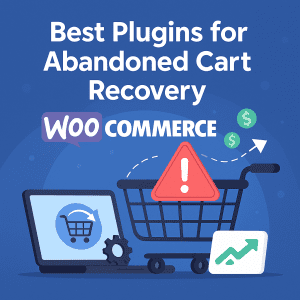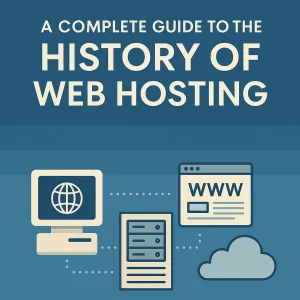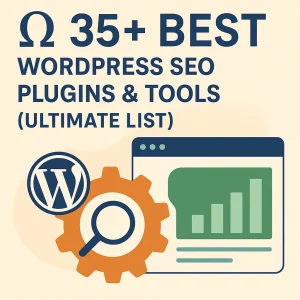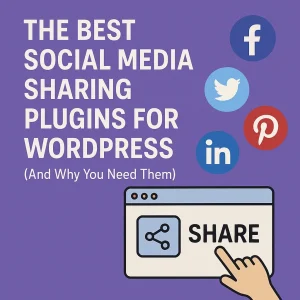 The Marketing landscape and business in general are quite fluid and dynamic. What was working well yesterday may not work today, and what works today surely wouldn't work tomorrow. The role that has emerged in this dynamic environment as the much-needed compass for brands is that of the brand strategist. More than merely a job title, a brand strategist is a visionary, a researcher, and a storyteller rolled into one. They give birth to the identity of a brand while ensuring it finds resonance with an audience and stands out in a loud crowd. Whether you are a seasoned marketer wanting a specialization or simply a curious freelancer looking for another niche, this guide will tell you everything about becoming a brand strategist in 2025.
The Marketing landscape and business in general are quite fluid and dynamic. What was working well yesterday may not work today, and what works today surely wouldn't work tomorrow. The role that has emerged in this dynamic environment as the much-needed compass for brands is that of the brand strategist. More than merely a job title, a brand strategist is a visionary, a researcher, and a storyteller rolled into one. They give birth to the identity of a brand while ensuring it finds resonance with an audience and stands out in a loud crowd. Whether you are a seasoned marketer wanting a specialization or simply a curious freelancer looking for another niche, this guide will tell you everything about becoming a brand strategist in 2025.
Most importantly, it will cover everything from brand strategy core concepts through handlebar skills that you need to acquire, practical steps to get started, and the meticulous little role of your very own personal branding-including the digital infrastructure that underpins it.
What is a Brand Strategist? Understanding the Core Role
Before we can even begin to speak about how one becomes one, we first need to grasp the term brand strategist and what it really means. The brand manager or marketing manager role is the place where it gets confused-although such a function is entirely different and foundational.
Brand Strategy is the Blueprint, with the Strategist being the Architect.
At its most simple, brand strategy is the plan designed for a brand to be consumed by the audience over the long term. This is a plan that encompasses all aspects of a brand, from visual identity and messaging to customer experience and market positioning.
Brands have a blueprint designed by a brand strategist. They are not just a campaign manager, but the very foundation on which all campaigns rely. The main goal is to define the "Who, What, How, Where, and When" of the brand's expression.
Some practical examples include the following specific areas of work of a brand strategist:
- Core Audience Determination: In-depth market research will assist in this aspect, with the creation of detailed audience personifications. Yet, these are more than demographics; they include a customer's motivations, pain, aspirations, and actions.
- Defining Brand Identity: These work towards give brand core purpose, values, and mission, including the creation of the unique value proposition, that will answer to the question, "Why should our audience choose us rather than anyone else?"
- Image and Message Creation: A coherent messaging framework is created by the strategist. This messaging framework ensures that all communications - an advertisement, a social media post, or a headline on the website - communicate with a consistent, authentic voice.
- Competitive Landscape Analysis: They do also auditing of competitors concerning market trends, gaps, and opportunities in the market. Such an insight leads to efficient positioning of the brand and thus discovering a unique area where it can thrive.
- Brand Management Operations: Although the day-to-day execution may be handled by other stakeholders, a brand strategist does give strategic direction to marketing teams, creative agencies, and other key stakeholders to ensure that the married vision is expressed consistently across all platforms.
- Measuring and Adapting: They take the metrics that align best with their KPIs and use the data to measure how well the strategy has worked. This provides the means for continuous refinement and adaptation to an ever-changing market.
In simple terms, the brand strategist will be the brain that translates an idea into a scalable and iconic brand.
The Growing Importance of Brand Strategy in 2025
It's no coincidence that the brand strategist is currently undergoing an upward rise. Push marketing, in which generalized ads were accompanied through a barrage of mass messaging in the past, seems less effective today. Today's consumers are more selective, informed, and discerning; they are not looking for products but rather for value-driven connections with brands that they trust.
The above transformation is caused by some major forces as in:
- Consumer Demand for Authenticity- Consumers today, especially the younger generation, favor transparency in their brands, and they want a value match. This authenticity's foundation is built by a solid brand strategy.
- Information Overload brought by the Internet: Consumers have been overwhelming with brands these days. Most are deciding based on the reputation and identity of brands.
- The Power of Storytelling: It is now generic marketing, without compelling brand stories as a vital pillar in brand strategy. It builds emotional connection with audiences and creates long loyalists.
- More and more new small businesses or solo-preneurs come into the market, and thus the need for professional guidance in the brand's development is more needed.
Brand Strategy - Core Concepts: The Architect's Workshop
One must know the elementary frameworks that guide various actions to become a master in the art of brand strategy. These models, therefore, provide an orderly method of analyzing, specifying, and building a brand from the bottom.
Brand Pyramid: This is an excellent hierarchical model through which a brand is analyzed in its essential components, from physical to emotional. Going through these levels ensures the alignment of all aspects of the brand with the brand strategy.
- Level 1: Attributes. The first level of the model sets out the functional features of a product or service. For a tech company, this may refer to something like a particular software feature or some processing speed.
- Level 2: Functional Benefits. What problems do those features solve to form a rational proposition? A specific piece of software doesn't just create features; it saves time and money for the user.
- Level 3: Emotional Benefits. This is where the brand connects to the user. How does the product or service make the customer feel? In this case, for the tech company, an emotional benefit might be that they feel productive and in control of their work.
- Level 4: Personality. If the brand were a person, what would describe it? In defining this aspect, the model encompasses the brand's tone and character. Would one consider it a playful innovator or a serious authority?
- Level 5: Essence of the Brand. At the apex of the pyramid rests a short single statement summarizing the very core of the brand. It is the final promise, the reason for the brand to exist.
Brand Archetypes: Carl Jung came up with a series of archetypal personalities that provide a universal basis for any brand personality and create an unconscious bond with its target audience-familiar twelve characters.
- The Hero: The core desire is to prove worth through courageous action. This archetype fits well to brands that help others overcome challenges; just think of Nike's "Just Do It" mantra.
- The Sage: Wants to know and understand. Brands such as Google or The Discovery Channel take to this archetype in order to represent themselves as trustworthy guides and sources of information.
Essential Skills for the Brand Strategist of Tomorrow
Diverse skillets that skew between creative and analytical thinking are required for an outstanding performance in the domain. Thus, the skill set comprises the following competencies of an accomplished brand strategist in 2025.
Creativity and Strategic Orientation
The brand strategist should be able to think out of the box towards unique brand identities, which would involve:
- Brainstorming and Ideation: The process of developing innovative concepts and distilling perceived concepts into active expressions of a brand.
- Emotionally Charged Storytelling: This is the art of creating a narrative that engages the target audience at an emotional level.
- Visioning the Big Picture: This is the ability to link together all the components of a brand, from its logo to its customer service, in a coherent manner.
Market Research and Analytical Skills
This is an analytical side to the brand strategy. You should be able to:
- Conduct Extensive Market Research: Go beyond simple Google searches to deep dives to answer critical questions regarding market trends, consumer behaviors, and industry conditions.
- Data Interpretation: Ability to interpret profound hidden meanings from an assortment of data generated from analytical software tools, surveys, or market reports and proceed with logical reasoning toward data-driven decisions.
- SWOT Analysis: The ability to identify Strengths, Weaknesses, Opportunities, and Threats pertinent to a brand for strategizing the positioning of the brand.
Communication and Presentation Skills
An excellent strategy is worth very little if not communicated effectively. The brand strategist should be an excellent communicator, able to:
- Clear and Persuasive Writing: Ability to communicate in simple, compelling, and comprehensible language from complex ideas.
- Public Speaking and Presentation: Confidently presenting proposals and recommendations to clients, stakeholders, and internal teams
- Active Listening: Genuinely hearing clients' needs and challenges in order to create a truly effective strategy.
Digital Marketing Skill Set
In the digital era, a brand strategy intertwines with online presence. It must work on:
- SEO & Content: Knowing how content and search engine optimization work together to attract and engage a brand's audience.
- Social Media Strategy: Ability to sustain a coherent brand presence cross different social platforms.
- Web Analytics: Use tools like Google Analytics to track user behavior and determine the extent to which the digital strategy hits its mark.
Flexibility and Continuous Learning
The digital world moves fast. A brand strategist has to be:
- Flexible: Able to change and deviate the strategy based on new market information or technological advancements.
- Lifelong Learner: Updates themselves with emerging trends, tools, and technologies in Marketing, Design, and Business.
The Brand Strategist's Toolkit in a Data-Driven World
Next-generation brand strategies are derived from information and insights rather than speculation. In 2025, the ability to analyze data will become a superpower.
- Tools of the Trade: A modern-day brand strategist must be analytical and research literate. Knowing how to use tools such as Google Analytics to track user behavior on a website, SEMrush or Ahrefs for competitive analysis or keyword research, and social media listening tools like Brandwatch for tracking conversations about the brand and sentiment would be some of the key skills employed by a brand strategist.
- The Mix Of Two Different Data: A great strategy is born out of a combination of data. You must know how to read the numbers (quantitative data from surveys and analytics) while at the same time understand the human story behind those numbers (qualitative data from customer interviews, focus groups, and sentiment analysis in social media, etc.). Your job is to identify the "human truth" that the data are pointing to and narrate this truth into a gripping brand narrative.
Your Personal Brand: The Ultimate Proof of Your Skills
Only after you have built your own brand can you begin building brands for others. For a brand strategist, your personal brand stands as the most potent of all assets. It shows that you are not only equipped with branding principles but can also apply those principles to your life.
For a brand strategist, building a great personal brand means being:
- Defining Your Niche: What kind of brand strategist are you? B2B tech, luxury goods, or non-profits? When you establish which niche you want to work in, you put yourself in the position of being considered a specialist rather than a generalist who can do all things for everyone. You will also tell potential clients what your expertise is.
- Build Your Brand Story: What is your "why"? Let your journey speak of the things you have done, the things you love, and the things that drive you – the real story behind who you are and what connects you to your clients of choice.
- Showcase your Expertise: You might publish this as a blog, podcast, or YouTube channel, but with a strong presence on LinkedIn, that could be much of the difference. Talk about what you consider the industry trends, case studies, and your strategic frameworks.
- Create an Online Portfolio: Absolutely critical is a professional website. That will become your one-stop shop for your personal brand: your actual work, testimonials, and all the ways you showcase the value you bring to the table.
Digital Infrastructure for Personal Branding: A Canadian Point of View
Such strategic decisions regarding digital infrastructure-to be precise, web hosting-will have to be made when the brand strategist is in Canada: Websites are more than just business cards on the internet; they reflect the brand image and its performance as well as security. Choosing the proper hosting solution is one of the many very crucial steps.
Some considerations and popular options shared among most strategists in Canada before stepping into this department:
Best Web Hosting in Canada for Personal Branding
In order to create your personal brand, hosting your site with the speed and stability of incredible management is important.
- 4goodhosting: With a pivotal focus on serving Canadian patrons, 4goodhosting is known as a very reliable name in the range of hosting solutions appropriate for the brand strategists. The services offered by the company are guaranteed to be fast and user-friendly, giving a proper base for a professional portfolio site making it one of the best web hosting in Canada for personal branding.
- Hostinger: An inexpensive initial cost and a simple user interface make Hostinger a good choice for beginners. It offers one-click WordPress installation and uptime of 99.9% while making it a making it a reliable option for building and managing your personal brand website.
- HostPapa: Independently owned, hosted in Toronto, HostPapa is a great local option for someone seeking a simple solution with data centers in Canada and the best performance in the Canadian market by small businesses.
Website Hosting Solutions for Brand Strategists
As the client base expands and your portfolio increases, you may find that you need website hosting solutions for brand strategists to handle a greater number of client sites or larger projects..
- Shared Hosting: This is the most basic and cheap option where your site shares a server with many others. This is great for a new portfolio site or simple blog, but there is a chance that it may be slow when one of the other many sites suddenly gets a high traffic volume.
- Managed WordPress Hosting: For the most part, a portfolio is built on WordPress. Managed hosting takes the burden off your shoulders to be concerned with the technical side of things, such as automatic updates, daily backups, and, most importantly, security enhancement. Company like 4goodhosting offer premium managed WordPress hosting Canada for portfolio sites. That way, you can focus on your clients.
VPS Hosting in Canada for Freelancers and Consultants
A hard-working business expanding over various clients with substantial need for control and resources next looks for a VPS Virtual Private Server-its next logical step. This is where VPS hosting in Canada for freelancers and consultants becomes the ideal solution. Use a VPS to save certain resources on the server giving you advantageous difference on performance and security opposed to shared hosting.
- 4goodhosting: a provider for VPS hosting in Canada, it is known for high-speed NVMe SSDs, with a 99.99 percent uptime guarantee. Their plans are scalable and offer full root access for technical flexibility.
- DedicatedCore: a Canadian-based VPS hosting provider with high-speed NVMe SSDs, available with 99.99 percent uptime. Scalable plans offer full root access, which guarantees technical adaptability.
- Webcore Labs Inc.: An entity of Calgary, which mainly serves business-grade VPS hosting, assures customers absolute faithfulness in ensuring reliable performance. This would be a company to consider for the Canadian freelancer who loves local infrastructure and tech support.
PIPEDA-compliant hosting for personal branding sites.
As a brand strategist, you are primarily in control of matters related to client data. If you have any Canadian clients, PIPEDA standards will be made applicable to you. PIPEDA stands for the Personal Information Protection and Electronic Documents Act, aimed at overseeing how private sector organizations are to collect, use, and disclose personal information.
The first important step to compliance with PIPEDA is the selection of a hosting provider with a data center located in Canada-housing data within the country. While 4goodhosting has data centers in Canada, and therefore good compliance with PIPEDA, it is imperative that you-the business owner-comply with the practices of your site; the terms of the privacy policy and data collection forms fall under this. A host must maintain the server within a secure environment, but it is your responsibility to ensure compliance with privacy and data protection. This his makes 4goodhosting an popular choice for those looking for PIPEDA-compliant hosting for personal branding sites.
Digital Security: Protecting Your Brand and Your Clients
The spirit of doing business in the digital age embodies building up and protecting a brand from the onslaught of information technologies. You as a brand strategist might be exposed to certain sensitive client information responsible for the security of a client's digital assets. One of your core areas of study should be on the most common attacks over the web. Digital strategy isn’t just about branding—it’s also about protection. Learning about the 15 most common web attacks can help you keep client data secure.
SQL Injection: An attack wherein a hacker directly enters harmful code into the website's database.
Protection: Secure coding practices when programming the client's websites.
Cross-Site Scripting, or XSS: An attack where a hacker injects malicious scripts into a website.
Protection: Input sanitization and secure tools to trace and block runs of those scripts.
DDoS (Distributed Denial-of-Service): An attack whereby huge volumes of unwanted traffic are directed from multiple sources. Protection: Selection of a hosting provider that incorporates DDoS protection as well as a content delivery network (CDN).
Credential Stuffing: A technique where hackers take username and password combinations stolen from one site and test them against a user's account that may have accessed that other website.
Protection: Inform clients and client's customers to apply multi-factor authentication (MFA).
Brute Force Attack: Attacks where the attacker attempts all possible password combinations systematically.
Protection: Enforce a strong password policy, alongside the use of necessary tools for account lockout following a predetermined number of failed login attempts.
Phishing: Social engineering attacks, whereby a hacker impersonates a trusted entity to trick individuals into revealing sensitive information. Protection: Train clients and their teams to recognize phishing emails.
Man-in-the-Middle (MITM): Refers to the act of interception and reading of communications between two entities.
Protection: Always have an SSL certificate (HTTPS) in place for you and your client's websites to ensure data encryption in transit.
Malware and viruses: Malicious software written to disrupt the normal functioning of computers.
Protection: Security software and firewalls are in place, as well as periodic malware scanning.
Zero-day exploits: vulnerabilities in software that the vendor is unaware of and thus has no patch for it.
Protection: Regular updates for all software, plugins, and themes of your and your client's websites.
Session Hijacking: Where an attacker steals a user's session ID in order to impersonate that user in a website.
Protection: Enforce strong session management in addition to encrypting all session data.
Directory Traversal: The attacker uses a web browser to gain access to unauthorized files and directories on a web server.
Protection: Secure web server configurations.
Cross-Site Request Forgery (CSRF): A request wherein a user is tricked into unknowingly submitting a malicious request.
Protection: Use anti-CSRF tokens in web forms.
File Inclusion Attacks: An attacker tricks a website into executing a non-intended application.
Protection: Sanitize all user inputs to prevent malicious file paths from being included.
Misconfiguration: Vulnerabilities originating from improper settings on servers, applications, or networks.
Protection: Routine audits of server and application configurations.
No backup: Lack of a good backup strategy puts the organization in very high risk of data loss from attacks.
Protection: Set up regular automated backups.
Brand Strategist Salary in 2025
According to different locations, different experience levels, and type of company which could be either agency work, corporates, or freelancing, remuneration of brand strategists varies a great deal depending on these factors.
- Entry-level (1-4 years of experience): An entry-level brand strategist in major cities of Canada is expected to earn an annual salary of about $50,000-$70,000 CAD.
- Mid-career (5-9 years): After getting some experience and building up a solid portfolio, one can expect a salary ranging from $80,000 to $110,000 CAD.
- Senior (10 years and plus): The most experienced brand strategists, especially those in leadership positions, command a salary of CAD $120,000 and beyond.
Freelance brand strategists have different earning models, either charging per project basis or hourly basis with respect to worked time. In general, they normally earn quite a bit compared to a regular salary.
Conclusion
The evolution of branding is not merely the selling of products; instead, it expresses the art of developing deep, meaningful connections, and it is the brand strategist who will steer the charge into that territory. The brand strategist will breathe life into the architecture of brand loyalty-building communities rather than mere customer bases. They will undertake the creation of authentic, purpose-based brands that reflect the values of an unsuspecting new generation of consumers. This shift will move brands from the realm of mere awareness to the coveted stage of advocacy; wherein the audiences of a brand become its most fervent advocates.
You will have the most successful and fulfilling career with the tools and guides laid out in this manual-for successfully paying attention from the right kind of education and hands-on training to the painstaking process of constructing a fantastic personal brand. Your personal brand, built and presented on the strongest digital platform, will be the only asset that truly matters in this whole exercise. That is where a trusted Canadian web hosting provider, like 4goodhosting, will become an unbeatable partner. With their reliable and secure solution, be it solid VPS hosting or dedicated servers, you will have all the nuts and bolts required to showcase your portfolio, realize client projects, and professionally maintain your online presence by building it to be as robust as and resilient as your brand strategy.
In larger contexts, the future brand strategist will also become a conservator of digital reputations and cultivator of human-centric experiences. They will realize that a brand's worth is being computed in the trust earned, relations built, and good brought. Adopting and committing to this challenge will not only empower you to erect impactful brands-but, also take part in sculpting the future of business.














